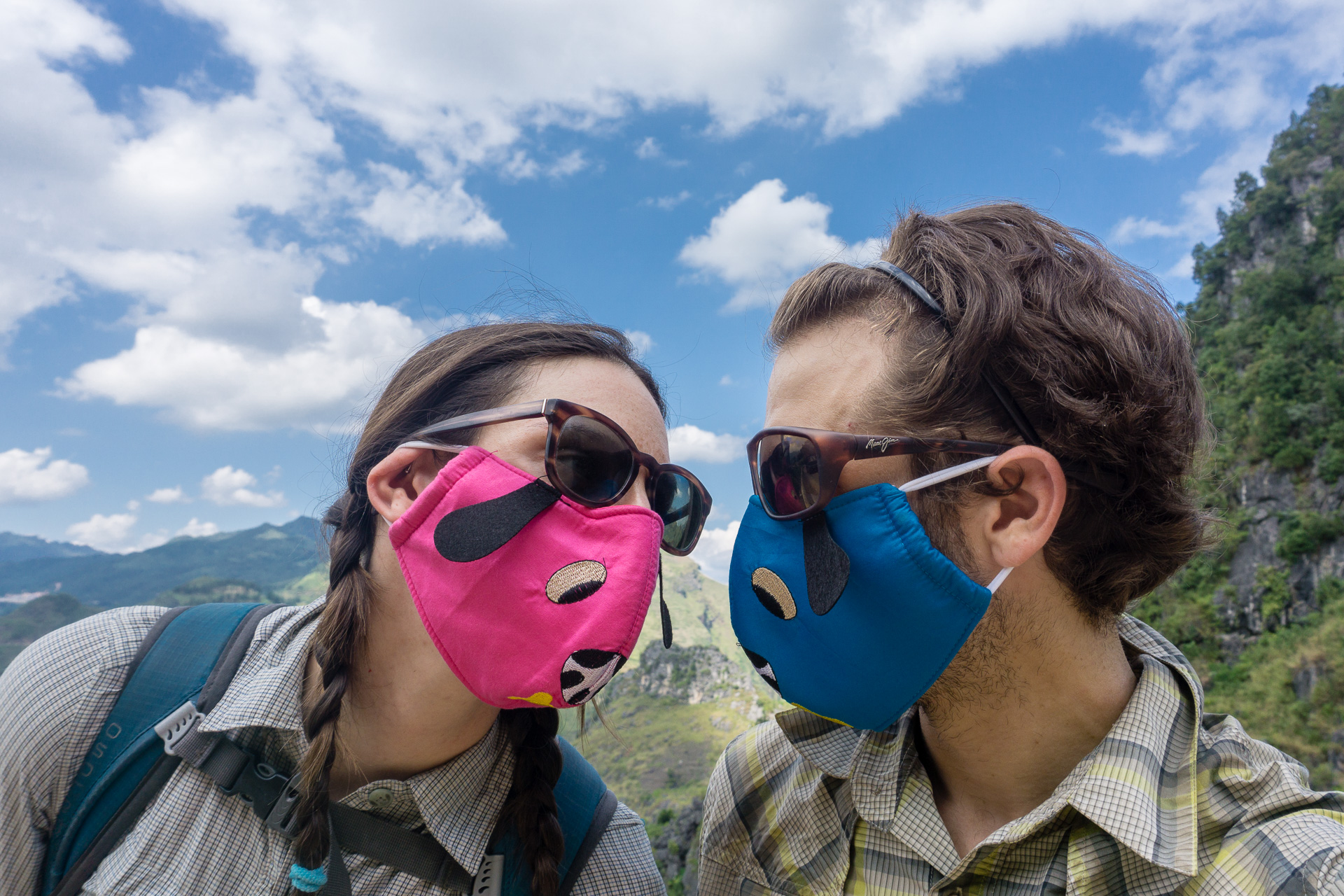The Ultimate Guide for Hiking Torres del Paine’s W, O, and Q Treks
/What is Torres del Paine?
Torres del Paine is a national park in southern Chile. You can take day trips into the park or sleep within the park hiking well-defined treks. The park has ice fields, various types of glaciers, lakes, expansive landscapes, and craggy mountains. Please read our popular narrative post about hiking the W-Trek by clicking here (this post has been featured in international magazines):
A movie montage of an average day hiking the "O" circuit (longer version of the "W" trek) in Chile's National Park.
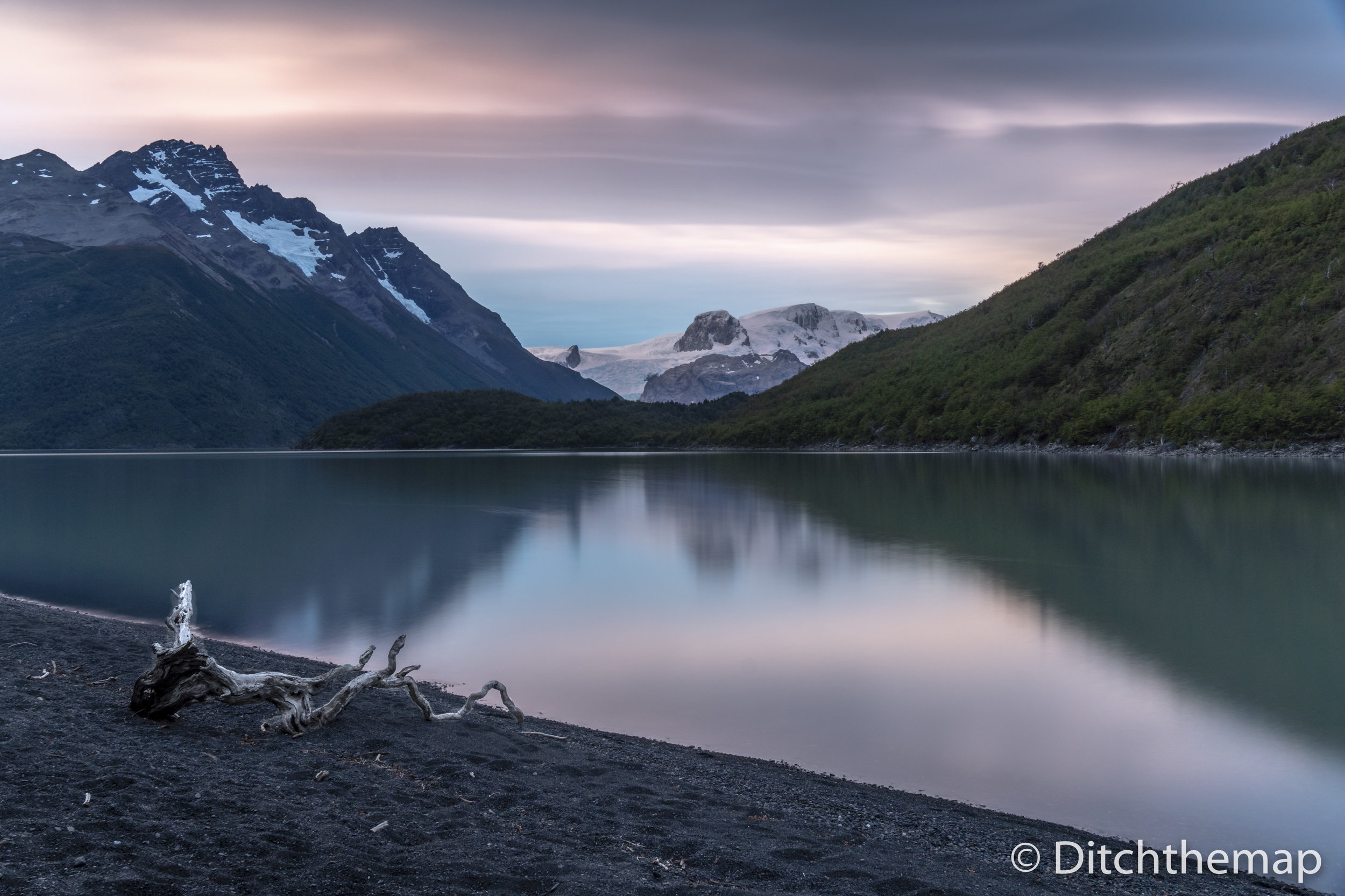
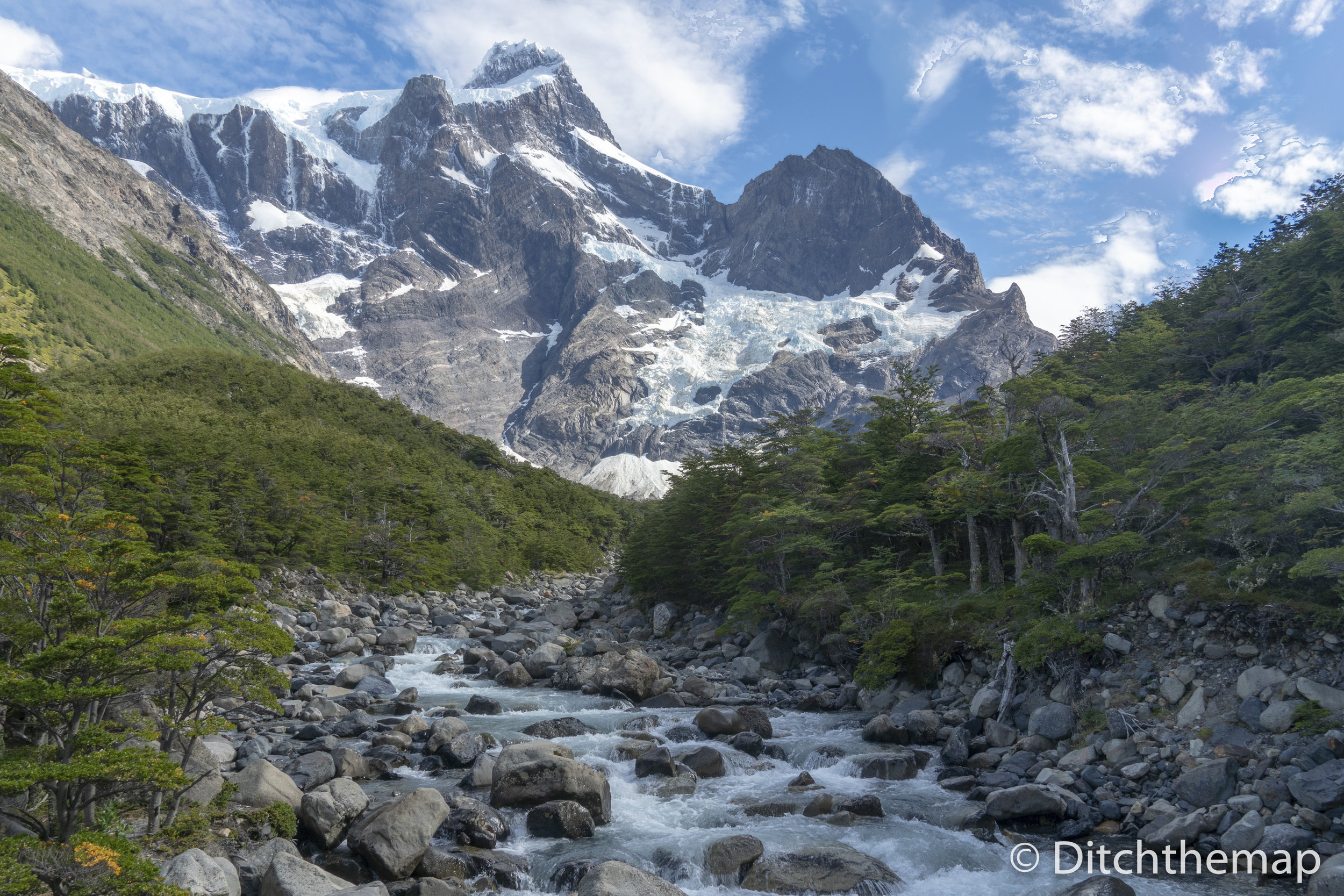
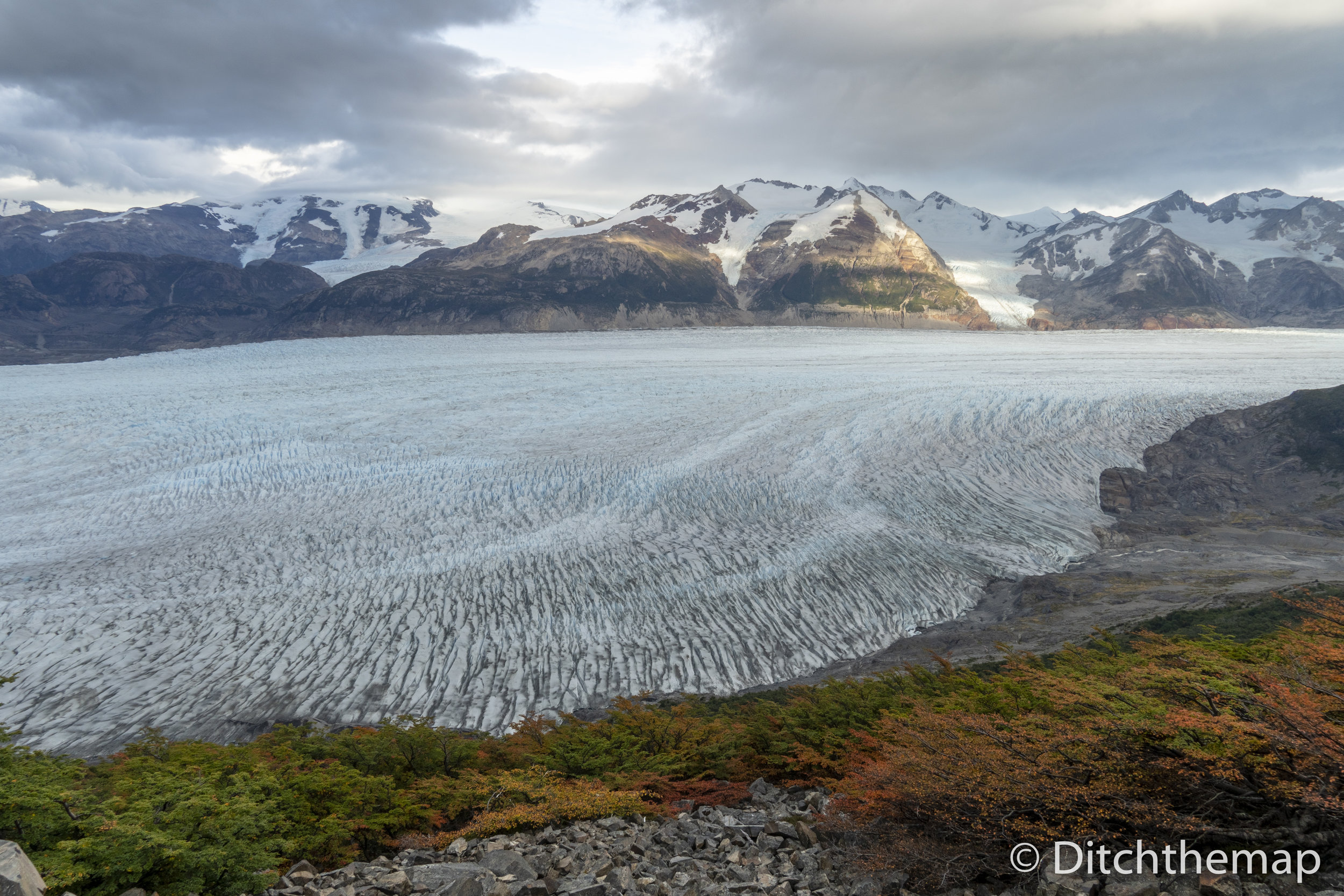
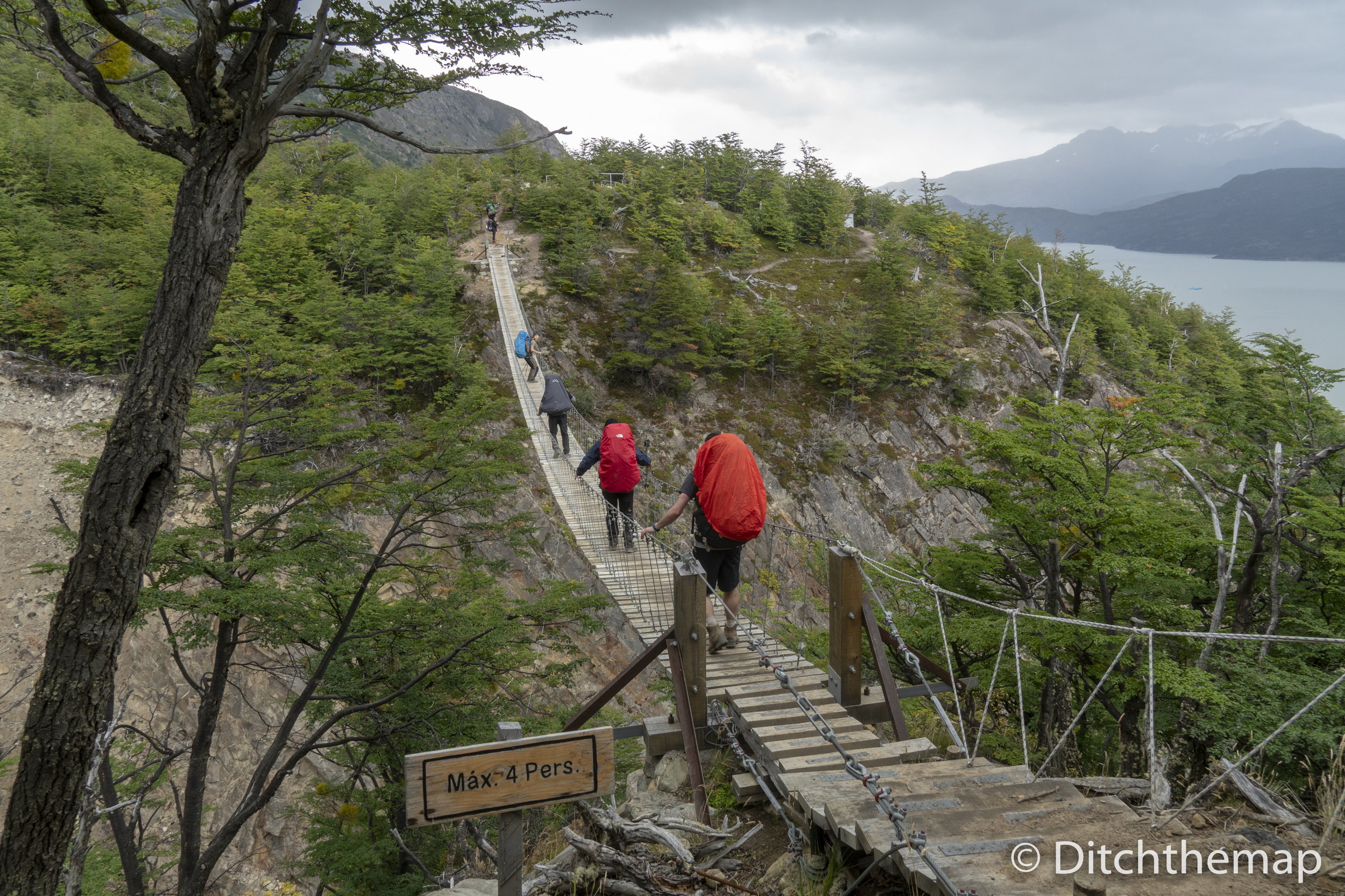

Extensive Hiking Information
Every day at 3:00pm a hostel and gear rental shop called Erratic Rock puts on a free lecture about hiking the W. It is short and very informative with a Q&A session at the end.
Getting to the Park
Puerto Natales is the gateway city into the park. You can arrange all your lodging, transport, gear rental, tours, etc. once you get to Puerto Natales. However you may want to reserve your campsites/refugios several months in advance as popular spaces tend to book up.
Getting to Puerto Natales: The two closest airports are Calafate, Argentina and Punta Arenas, Chile. Flying into Punta Arenas from Santiago is a cheap option if you are already in Chile but for those traveling from Argentina Calafate is your best bet. Although google maps will state the bus from Calafate to Puerto Natales is 3.5 hours, agencies will plan for 6 hours due to road conditions and a border crossing. Busses from Punta Arenas are only a few hours and don’t involve any border crossings. If flying into Punta Arenas a nice place to stay is Hotel Carpa Manzano. You can also take a day trip to see the King Penguins with Patagonia Tours. Punta Arenas also has a tax free area none as Zona Franca, which is just north of the city. You can buy some travel equipment here at reduced prices.
Busses into Torres del Paine leave daily at 7:00am and 7:15am from the bus terminal and arrive in the park around 9am. Busses will drop you off where you can buy entrance tickets (21,000 pesos but USD are also accepted—cash only). Please bring your passports and all other reservations you have. You can take a shuttle to central which is where most people start their journey. You can also remain on the bus and get dropped off at the catamaran which will take you to Paine Grande (one-way/return tickets cost 20,000/30,000 pesos but USD are also excepted-cash only).
Comparing Various Hikes within the Park:
You can do day trips in the park but you’ll miss most of the park’s splendor and this should only be reserved for elderly or those unfit for hiking/trekking.
Map of Torres del Paine “W” and “O” Treks
W-Trek: This is by far the most common and most people you meet in the park will be undertaking this 3 to 5 night trek within the park. You’ll stay at Paine Grande and/or Refugio Grey, Cuernos or Frances, and Central or Chileano. By completing the W-trek you will be able to see the three largest attractions in the park (glacier grey, mirador Britanico, and The Torres). The hike will be a bit crowded so come prepared to share nature with hundreds of others. The mess halls along this hike will be cramped, loud, and full of conversations about excited tourists and their plans for their time in the park
O-Trek: The O-trek adds 4 additional nights to the W-Trek and takes you in a complete circle. The campsites of Seron, Dickson, los Perros, and el Paso are much more remote and only a fraction of the size of those found on the W. The amenities are fewer, options to buy food are limited, and the ability to access power is restricted. However during my last trip into the park (in 2015) the O was even more rustic. Only a few years back you had to carry your own food and camping supplies with you but now you can rent gear and buy warm meals along the way. You’ll be hiking with a cohort of people that will all set up camp at the same campsites each night. The 20 or so people that you will hike with will become your family for the next several days. Although the hikes are long the overall pace seems to move more slowly. Conversations are less about accomplishments and more geared towards experiences during the day. If you’re looking for a backcountry type camping experience and more personal connections this hike is for you.
Q-Trek: This is the O-Trek with one additional day added—an extra 17km hike from the CONAF Administration building takes you to Paine Grande. Although we started our hike from the CONAF Admin. Building please note they require you only hike south. If you plan to break the rules and hike north, as we did, you will need to hitch a ride (or walk) to the starting point. You will be able to do this from the catamaran stop.
Trail Maps Along the Hike: Some are more accurate than other so don’t rely on them too much. Keep track of your own progress to estimate your hiking time and ETA and you’ll be better off. I’ve heard some people complaining that the posted estimated time was way too short while other commented on them being way too long.

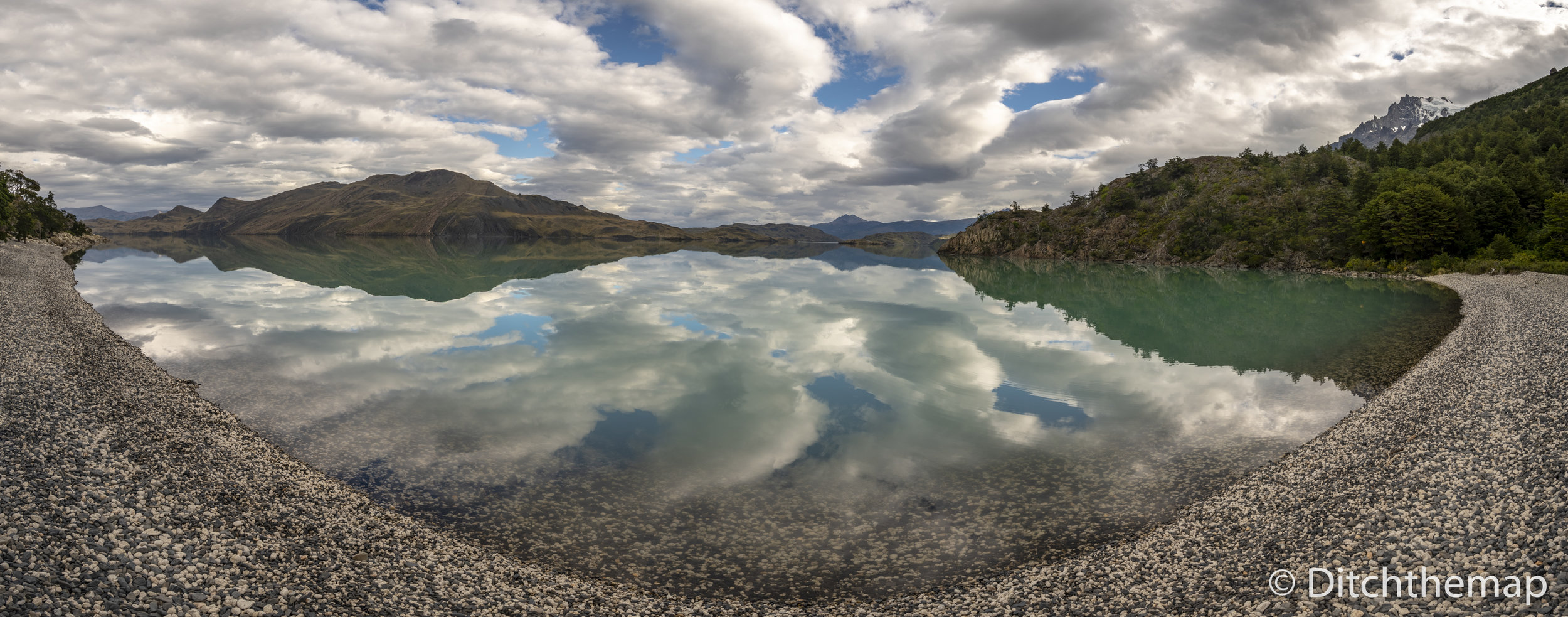
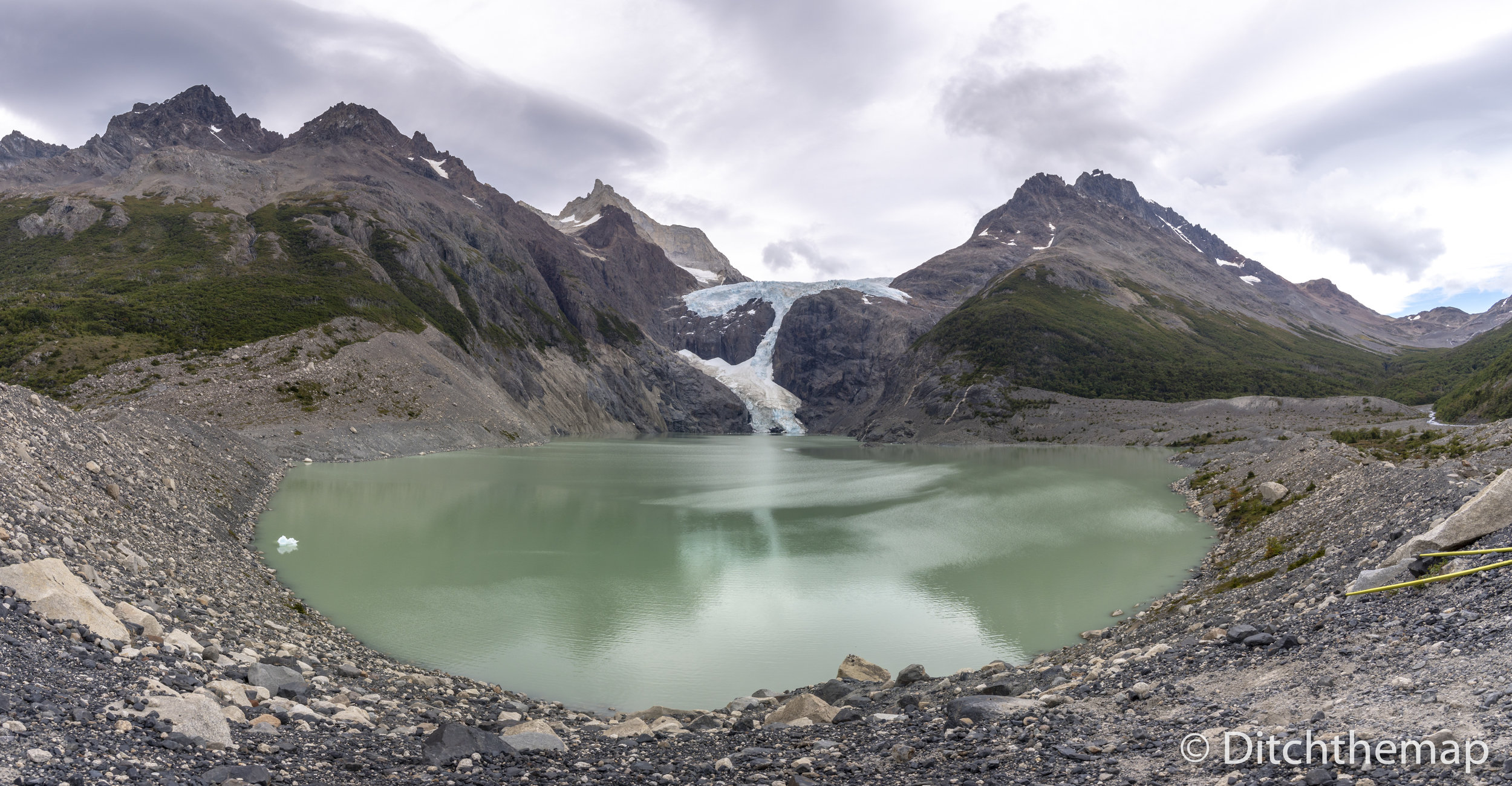
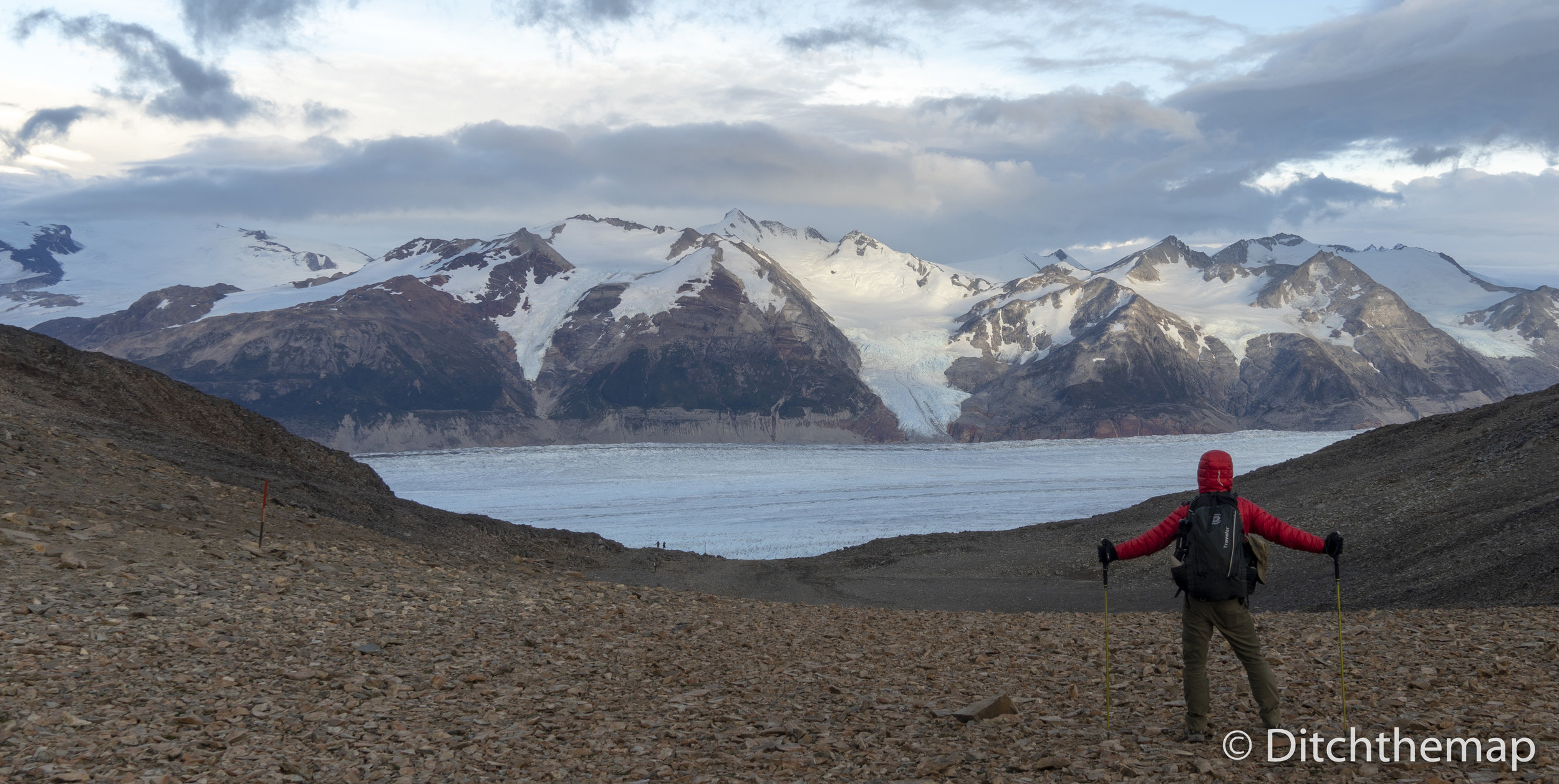
Types of Lodging in the Park
Our first time in the park we reserved our spots almost a year in advance. This time around we were able to book only a couple weeks prior. We did need to delay our arrival several weeks to make things work out—also we were among the last 50 people hiking the O before the back circuit closed for the year (the O portion of the park closes April 1st).
Camping (gear carried with you): This includes your personal gear and/or any rented gear you arranged before arriving in the park. This is your cheapest option and will cost you $8 to $20 USD per person per night (there are several free camp sites you can book through the CONAF website). You will need to carry your gear with you from site to site. You still need to reserve all campsites in advance. Until recently this was the only way to hike the O circuit.
Camping (rented at campsite): You can rent full gear at every camp site. You will get a 4-season tent, sleeping mattress, sleeping bag, and pillow. You will pay between $40 to $60 USD per person per night. You will not have to set up or take down any of the gear and everything will already be prepared for you upon your arrival at the campsite.
Shared Rooms/Domes: Only a few years ago this type of accommodation was unheard of outside the larger refugios along the main W circuit. Now almost all sites offer this option. You will be provided a bed in a dorm with 5 to 7 other people. You’ll have everything you need to sleep comfortably. You’ll pay between $55 and $110 per person per night.
Private Room: The only place to rent a private room is at the Torres Hotel and most people staying here are probably not doing the W trek. You’ll pay hundreds of dollars a night for a room.
Getting Supplies in Puerto Natales
Do yourself a favor and spend at least 1 or 2 nights in Puerto Natales before you plan to head into the park, especially if you plan to hike the complete O circuit. Getting everything prepared, packed, rented, and organized takes more time than you think. We stayed at a lovely hotel called Hostal Los Pinos in the center of town which provided us quick access to the several grocery stores around town.
This time around we took with us most of our gear. We picked up some loose ends at the duty free shops in Punta Arenas and only had to rent a camping stove. Check out our ultralight camping gear in this short time-lapse video where we set up camp during our recent trip in the park.
I will not go into too much detail about the type of gear you should bring as you can read this advice elsewhere or hear it at the info session at Erratic Rock. Take your time and shop around since prices can differ by magnitudes of 2 depending on where you buy/rent your gear/food. There are places that sell only dried fruit and nuts and offer prices half of what you’ll find in other stores. With the W it makes sense to rent gear but when you have to rent for almost 10 days it may start to make sense to buy gear and then try to resale after your travels. Gear will also be cheaper in your home country (especially true in the US).
Packing Advice (Food)
10 Days Worth of Food Nicely Pre-Packaged for our O-Trek
We didn’t spend too much time worrying about the weight of our food when we hiked the W but this time around we were much more concerned. We spent 10 days in the park and carrying that much food adds up. In fact the majority of our weight on our backs at the start of our hike was food weight. We found the following method to be immensely helpful. We calculated how many calories we needed to consumer each day and counted out nuts, cookies, dried fruit, etc. into zip lock backs—1 for breakfast, 1 for snacks throughout the day, and 1 for dinner. We also has a few extra snacks in our bags for good measure. Counting calories is essential for 2 important reasons. You need to eat enough when hiking and if you don’t bring enough food you will be spending hordes of cash at the refugios to keep your appetite at bay. Conversely, if you bring too much food you will be carrying more weight than you need and you’ll quickly learn how heavy carrying 20 kilos 8 hours a day really is. Consider this, if you brought only 4 ounces of extra food for each meal you would end up carrying and extra 7 kilos between 2 people.
Having food individually packaged also makes it easy to handle as you’ll want to hang your food up in the trees at most sites to keep the mice away. At least 4 people had their bags and/or tents eaten through by enterprising mice.
Food Ideas To Pack:
Cured meats and hard cheeses – these work great and will remain good your entire trip. We ate our last bit of meat and cheese on day 9 and it tasted just as fresh as day 1. The temperatures are low and you will not need to worry about spoilage.
Fresh fruit - should be avoided because of their low energy to weight ratio. If you bring make sure to eat early on.
A liter of wine – I brought this to share with my table the first night of the hike. This helped to form some lasting bonds that weren’t soon forgotten.
Peanut butter, jam, Nutella – spreads work great as they are basically pure energy and can make an unsavory cracker more delectable.
Dried fruit and nuts - will provide you with most of the nutrients you need and will help you in the much lacking fiber department when it comes to camping food.
Cookies, chocolates, and treats – this is your time to indulge. Normally you want to avoid such calorie-rich foods, but when weight is your enemy make sure you stock up.
Teas and coffees – Drinking cold glacier water has its appeal but there is nothing like sitting down with a warm beverage after a day of hiking.
Powdered soups – these taste relatively good and cook up quickly. I added rice noodles and whole wheat pasta to mine to add calories. Make sure to drink plenty of water as these are incredibly salty.
Dehydrated foods – you can buy these in town but you’ll pay a pretty penny for them. We met a couple of people on the trail that prepared their own. If you want trail cred (like street cred but way cooler) whip out your own dehydrated fettuccini Alfredo.
Packing Advice (Gear)
Pack in a way that makes sense to you. Nothing sucks more than having to riffle though your entire bag in search of a spare battery. Keep like things together and think about when you will need things from your bag. Does your teddy bear really need to be readily accessible? Maybe that ourside pocket is better saved for a granola bar or toilet paper. Bring extra garbage bags to keep everything organized and dry. Sleep with your phone, camera, and spare batteries at the foot of your sleeping bag to keep them warm (operating batteries at low temperatures shorten their life). For this reason many hikers keep extra camera batteries in their pockets during the day. As the park continues to modernize warm showers are becoming available almost everywhere so pack a quick-drying travel towel and single use soaps/shampoos to avoid having to buy them at the refugios. A drop sheet under your tent will help keep you dry and compression bags will reduce the overall bulk of your gear.
Other Advice
Thanks to the thin ozone (aka hole in ozone) you’ll want to load up on sun lotion, hats, and glasses. With very few acceptations you will not go more than an hour without a fresh water source so please leave your large water bladders/bottles behind. Charging at refugios is now easier than ever so leave behind your power bricks. Internet is available at most campsites along the W for those who still want to remain connected. Most importantly, try to enjoy the best scenery that Patagonia has to offer while you visit Torres del Paine National Park.
Please don’t hesitate to reach out to us if you have any questions about your trip to Torres del Paine.
Also Pin this post for later, to help you when you’re packing for your all important Torres Del Paine trip.














